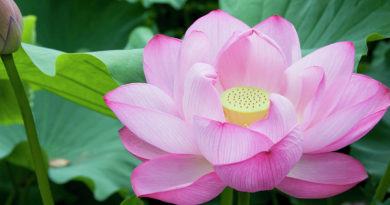NO INNER CORE – ANATTA: MISUNDERSTANDING ANATTA
NO INNER CORE – ANATTA: MISUNDERSTANDING ANATTA
We will now discuss some of the attempts to place a doctrine of atta into Buddhism. Some scholars have tried to, in the words of Dr. Walpola Rahula, “smuggle” the idea of atta into the teachings of the Buddha.”
Let us now see how two scholars, Ananda K. Coomaraswamy and I. B. Horner, already discussed briefly have mistranslated certain Pali terms to demonstrate that Buddha affirmed the existence of atta. They argue that Buddha did indeed claim that the five aggregates are not atta, but that He never directly denied the existence of atta. The five aggregates are not atta, but there is something apart from the five aggregates that we can call atta, self or soul, these scholars claim.”‘ Whenever Coomaraswamy and Horner see the word atta, they try to imagine that it means eternal self or soul.
One of the passages they point to is found in Dhammapada (verse I60): “Atta hi attano natho.” They translate is as “Self is the lord of self.” They say that it means that the big Self is the lord of the little self. Actually, it means, “One is one’s own lord or refuge,” or, “One is one’s own support.” The second line of the verse reads, “Ko hi natho paro siya,?” or “Who else can be the lord or refuge?” In Pali, the word atta can mean self, soul, or eternal self, in the Hindu sense, or it can simply be a part of a reflexive pronoun like himself, yourself, or myself. Thus when Buddha says “Atta hi attano natho, ko hi natho paro siya?” mean “One is one’s own lord or refuge; who else can be the lord or refuge”, it is clear that atta means oneself, not soul.
Buddha urges people to rely on themselves, on their own effort, and not to rely on others in their spiritual practice. Another passage which is misinterpreted in the book by Coomaraswamy and Horner is from the Mahaparinibbana Sutta’: “Attadipa viharatha anannasarana.” The meaning is, “Dwell having yourself as an island, having yourself as a refuge and not anyone else as a refuge.” Here also they interpret atta to mean soul or eternal self.
They claim that Buddha was instructing us to make the soul our island or refuge. But in the next line, Buddha says, “Dhammadipa viharatha dhammasarana anannasarana,” which means, “Dwell having the Dhamma (Buddha’s teachings) as an island, having the Dhamma as a refuge, nothing else as a refuge.” Buddha is instructing his followers to rely on their own effort and on the teachings, especially as He was soon to be gone from this earth.
The idea of atta as soul is completely foreign to this passage. Moreover Buddha went on to say, “How is the monk to dwell making himself an island?” He then went on to describe the practice of the four foundations of mindfulness. The Buddha really meant that one should make Satipatthana meditation (contemplation of the body, feelings, mind, and dhamma objects) one’s refuge.
There is no mention of soul whatsoever Another passage Coomaraswamy and Horner point to is the story in which Buddha spoke to some princes. There were thirty princes who were cousins of King Pasenadi of Kosala. Twenty-nine of them had wives, but one did not.
One day, they went to a park to amuse themselves, and they hired a woman for the unwed prince. When they were drunk and having fun, the hired woman took all of the valuables and ran away with them. They looked for her and met the Buddha. They asked Buddha if He had seen her and He said,
“What do you think, young men! Which is better for you? To search after the woman or to search after yourselves (attanam gaveseyyatha)?” They replied that it would be better to search after themselves, and so Buddha told them to sit down and listen to a Dhamma talk.
Coomaraswamy and Horner interpret the word atta in that passage to mean higher self or soul, and they want it to mean that Buddha told the princes to search after atta. But Buddha is telling the princes to turn away from chasing after worldly pleasures and to practice the self-discipline of the Noble Path. In that Dhamma talk, Buddha spoke about giving (dana), moral conduct (sila), the celestial world (sagga), the peril, vanity and depravity of ‘sense pleasures (kamanam adinavam, etc.), and the advantages of renunciation (nekkhamme anisamsam). There is no mention whatsoever of searching :.,’ for a soul, for atta.
Another passage mistranslated by Coomaraswamy and Horner is one found : in Visuddhimagga: “buddhatta … Buddho.” They translate it as, “Buddha is awakened Self.” But the correct translation of the Pali is, “He is the Buddha because he knows or he has known.” The word buddhatta is not a compound so of buddha and atta, but one word, buddha, with the suffix – tta combined with the ablative case termination, a, which means `because of’. The word buddhatta therefore means ‘because of the state ofbeing one who knows’.
It would be better to say that one does not believe in the anatra doctrine and that Buddha was wrong about it than to try to say that Buddha taught a religion with atta in it. It is not accurate to say that Buddha did not deny atta. In fact, there are many places in the Pali canon where atta is denied by Buddha. For example, Buddha once said, “I do not see a soul theory which, if accepted, does not lead to the arising of grief, lamentation, suffering, distress, and tribulations.” Buddha also said, “Since neither self nor anything pertaining to self can truly be found, is not the speculative view that the universe is atta wholly and completely foolish?”
Buddha teaches that belief in atta is a wrong view (ditthi or miccha-ditthi) which will lead to misery. Wrong views must be rejected because they are a source of wrong and evil aspirations and conduct.
In Majjhima Nikaya, Buddha describes the belief in atta as an idea which leads to selfishness and pride: “The Perfect One is free from any theory (ditthigata), for the Perfect One has seen what corporeality is, and how it arises and passes away. He has seen what feeling… perception… mental formations.… consciousness are, and how they arise and pass away. Therefore I say that the Perfect One has won complete deliverance through the extinction, fading away disappearance, rejection and casting out of all imaginings and conjectures, of all inclinations to the vainglory of ‘I’ and ‘mine’.”
In the famous Brahmajala Sutta which is recommended for those who want to study an explanation of wrong views, Buddha describes and classifies all conceivable wrong views and speculations about reality. One of those wrong views is the belief that there exists an eternal self. Buddha says of this view:
“Therein, bhikkhus, when those recluses and brahmins who are eternalists proclaim on four grounds the self and the world to be eternal – that is only the agitation and vacillaation of those who do not know and do not see; that is only the agitation and vacillation of those who are immersed in craving.”
Coomaraswamy and Horner argue that Buddha’s denial of atta refers only to the phenomenal self, and that His denial is really an affirmation of what they call the Great Self (mah’atta) . They argue that Buddha stated that the five aggregates are not atta, but that He never categorically stated that there is no atta, or Self.
They claim that Buddha was only directing us not to see the real Self in the personal ego – a view identical to the Hindu view. They reason that Buddha’s denial of certain things being atta indicates that He affirmed a true atta of a different nature. When Buddha said, “This is not atta,” these scholars insert the following argument: “But a moment’s consideration of the logic of the words will show that they assume the reality of a Self that is not any one or all of the ‘things’ that are denied of it.”
But let us say, for the sake of argument, that I have five animal horns here. If I say “None of these horns is the horn of a rabbit,” does it mean that there exists somewhere else or in another form such a thing as a horn of a rabbit?
No. A horn of a rabbit is just a designation, an abstraction, without any corresponding reality. Similarly Buddha often said, “This is not atta. That is not atta. Nothing here is atta.” Does that indicate that Buddha means that there exists somewhere something that can be called atta? No.
I will conclude this section by explaining a very important statement found in Patisambhidamagga and in Majjhima Nikaya: “Sabbe sankhara anicca; sabbe sankhara dukkha (not in M.N.); sabbe dhamma anatta.” The first sentence means, “AII conditioned things are impermanent.” The second means, ‘All conditioned things are suffering.”
The third sentence, however is different. Here, Buddha does not use the word sarckhara, but He uses dhamma instead. Dhamma here means all things without exception. So the third sentence means, ‘AII things, conditioned or unconditioned, are anatta, are void of self and soul.” This means that even Nibbana, which is asankhara, unconditioned, is not atta or is void of atta. This statement unequivocally denies atta of any kind, even in ultimate Truth and Enlightenment, even in Nibbana.









